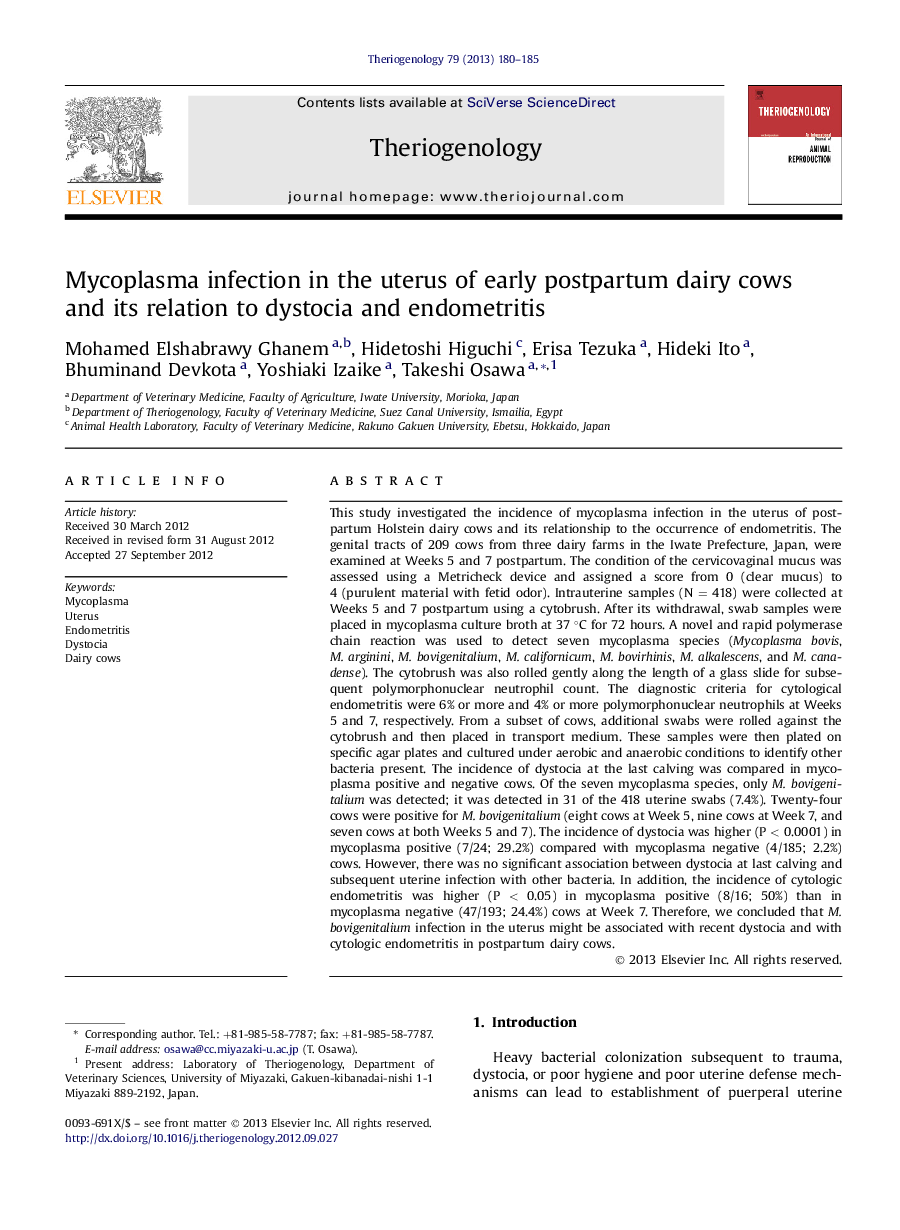| Article ID | Journal | Published Year | Pages | File Type |
|---|---|---|---|---|
| 2097671 | Theriogenology | 2013 | 6 Pages |
This study investigated the incidence of mycoplasma infection in the uterus of postpartum Holstein dairy cows and its relationship to the occurrence of endometritis. The genital tracts of 209 cows from three dairy farms in the Iwate Prefecture, Japan, were examined at Weeks 5 and 7 postpartum. The condition of the cervicovaginal mucus was assessed using a Metricheck device and assigned a score from 0 (clear mucus) to 4 (purulent material with fetid odor). Intrauterine samples (N = 418) were collected at Weeks 5 and 7 postpartum using a cytobrush. After its withdrawal, swab samples were placed in mycoplasma culture broth at 37 °C for 72 hours. A novel and rapid polymerase chain reaction was used to detect seven mycoplasma species (Mycoplasma bovis, M. arginini, M. bovigenitalium, M. californicum, M. bovirhinis, M. alkalescens, and M. canadense). The cytobrush was also rolled gently along the length of a glass slide for subsequent polymorphonuclear neutrophil count. The diagnostic criteria for cytological endometritis were 6% or more and 4% or more polymorphonuclear neutrophils at Weeks 5 and 7, respectively. From a subset of cows, additional swabs were rolled against the cytobrush and then placed in transport medium. These samples were then plated on specific agar plates and cultured under aerobic and anaerobic conditions to identify other bacteria present. The incidence of dystocia at the last calving was compared in mycoplasma positive and negative cows. Of the seven mycoplasma species, only M. bovigenitalium was detected; it was detected in 31 of the 418 uterine swabs (7.4%). Twenty-four cows were positive for M. bovigenitalium (eight cows at Week 5, nine cows at Week 7, and seven cows at both Weeks 5 and 7). The incidence of dystocia was higher (P < 0.0001) in mycoplasma positive (7/24; 29.2%) compared with mycoplasma negative (4/185; 2.2%) cows. However, there was no significant association between dystocia at last calving and subsequent uterine infection with other bacteria. In addition, the incidence of cytologic endometritis was higher (P < 0.05) in mycoplasma positive (8/16; 50%) than in mycoplasma negative (47/193; 24.4%) cows at Week 7. Therefore, we concluded that M. bovigenitalium infection in the uterus might be associated with recent dystocia and with cytologic endometritis in postpartum dairy cows.
